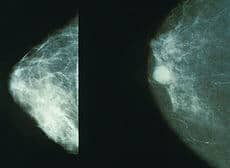Australian scientists have shown how a ‘transcription factor’ causes breast cancer to develop an aggressive subtype that lacks sensitivity to oestrogen and does not respond to anti-oestrogen therapies such as Tamoxifen and aromatase inhibitors.
Transcription factors are molecules that switch genes on or off. In this case, the transcription factor known as ‘ELF5’ inhibits sensitivity to oestrogen very early in the life of a breast cancer cell. In 2008, Associate Professor Chris Ormandy from Sydney’s Garvan Institute of Medical Research showed that ELF5 was responsible for the development of the oestrogen-receptor-negative cells in the breast during pregnancy that produce milk.

The team has also described the genetic mechanisms by which ELF5 opposes the action of oestrogen, and has shown that it is possible to alter the subtype of breast cancer by manipulating ELF5 levels. The findings are published in the highly prestigious journal PLoS Biology, now online.
“This work tells us that cancers which become refractory to anti-oestrogen treatment often do so by elevating their levels of ELF5 and becoming functionally oestrogen receptor negative,” said Ormandy.
“This raises the therapeutic option of manipulating ELF5 levels to treat breast cancer.”
“As ELF5 is intracellular, this could possibly be done with small molecule therapies that target protein-to-protein interactions, or with small inhibitory RNAs.”
“There is also the possibility of testing ELF5 levels in tumours to predict response to treatment and therefore guide treatment decisions.”
“Our key discovery here is that by simply manipulating one transcription factor we can change the subtype of breast cancer.”
